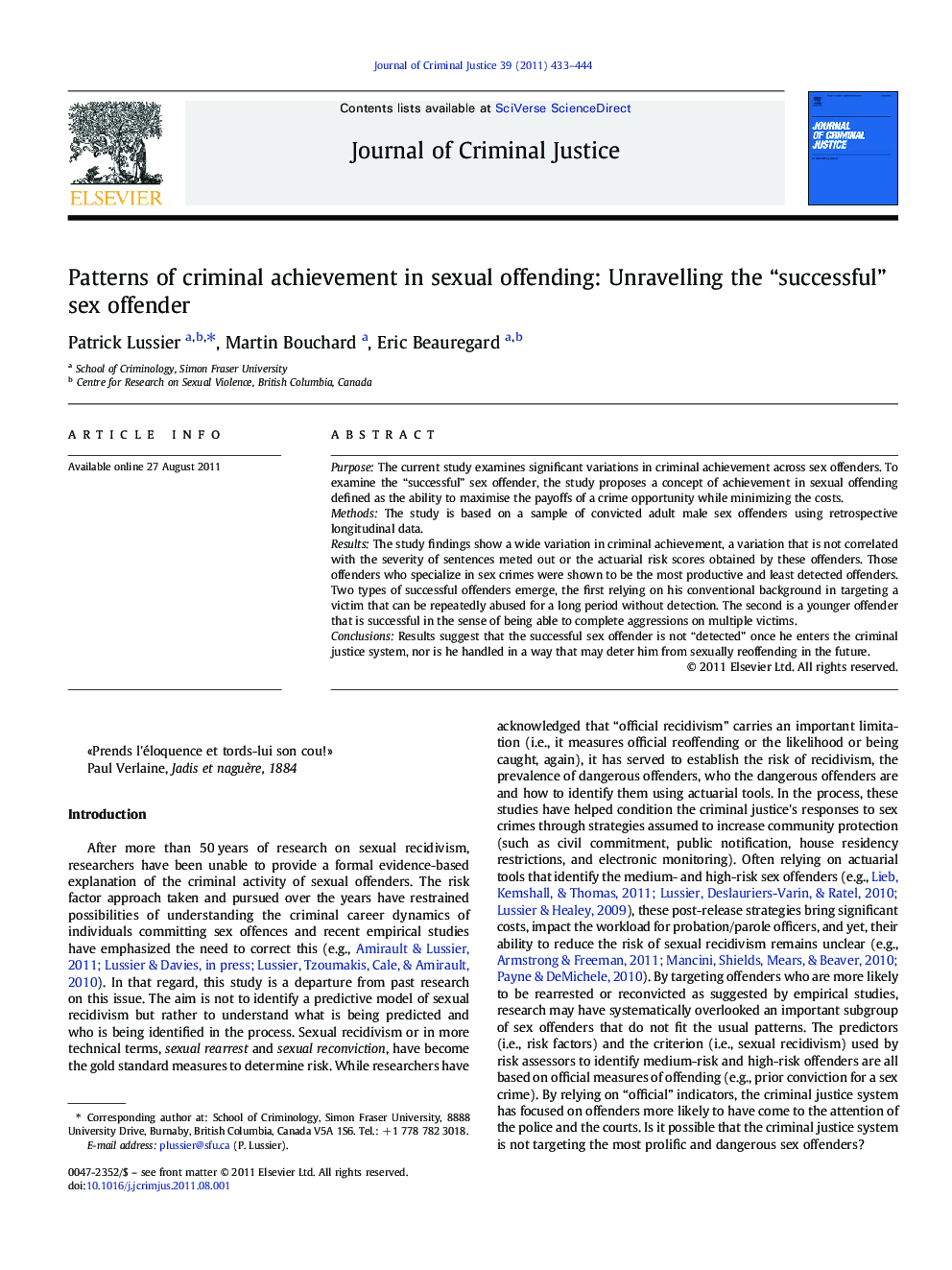| کد مقاله | کد نشریه | سال انتشار | مقاله انگلیسی | نسخه تمام متن |
|---|---|---|---|---|
| 882980 | 912036 | 2011 | 12 صفحه PDF | دانلود رایگان |

PurposeThe current study examines significant variations in criminal achievement across sex offenders. To examine the “successful” sex offender, the study proposes a concept of achievement in sexual offending defined as the ability to maximise the payoffs of a crime opportunity while minimizing the costs.MethodsThe study is based on a sample of convicted adult male sex offenders using retrospective longitudinal data.ResultsThe study findings show a wide variation in criminal achievement, a variation that is not correlated with the severity of sentences meted out or the actuarial risk scores obtained by these offenders. Those offenders who specialize in sex crimes were shown to be the most productive and least detected offenders. Two types of successful offenders emerge, the first relying on his conventional background in targeting a victim that can be repeatedly abused for a long period without detection. The second is a younger offender that is successful in the sense of being able to complete aggressions on multiple victims.ConclusionsResults suggest that the successful sex offender is not “detected” once he enters the criminal justice system, nor is he handled in a way that may deter him from sexually reoffending in the future.
► The current study proposes a concept of criminal achievement in the context of sexual offending.
► There is much variation in criminal achievement both in terms of offending productivity and cost avoidance.
► A small group of sex offenders are involved in a very large number of sex crime events.
► The most productive offenders are also those who avoid detection longer, up to 40 years.
► The successful and productive offenders do not received longer sentences and tend to be classified as low-risk offenders.
Journal: Journal of Criminal Justice - Volume 39, Issue 5, September–October 2011, Pages 433–444